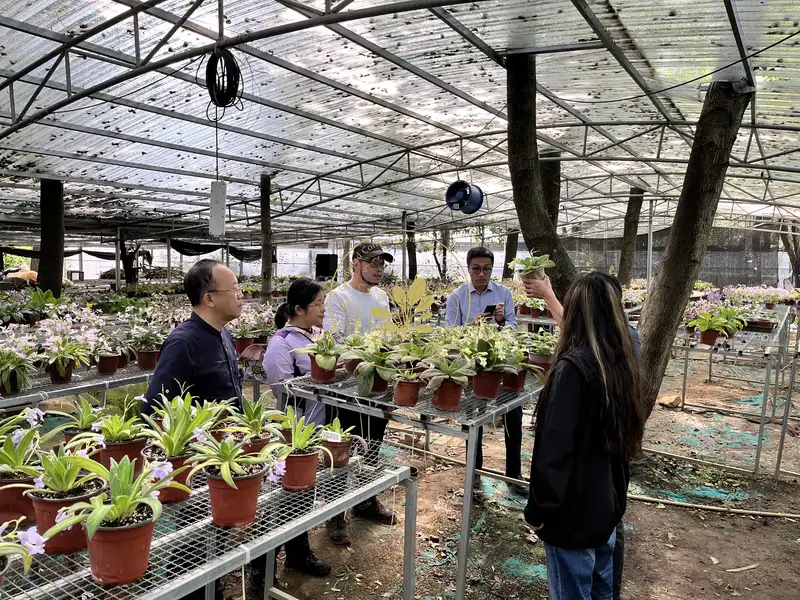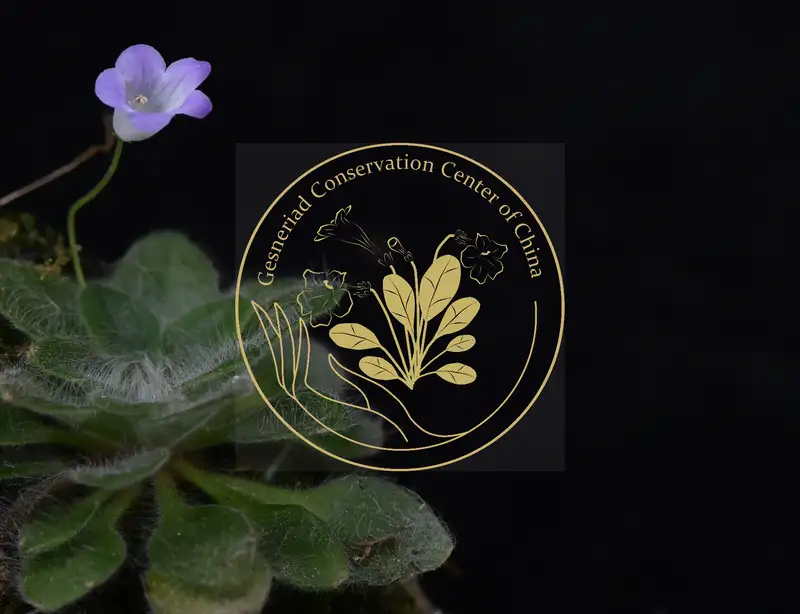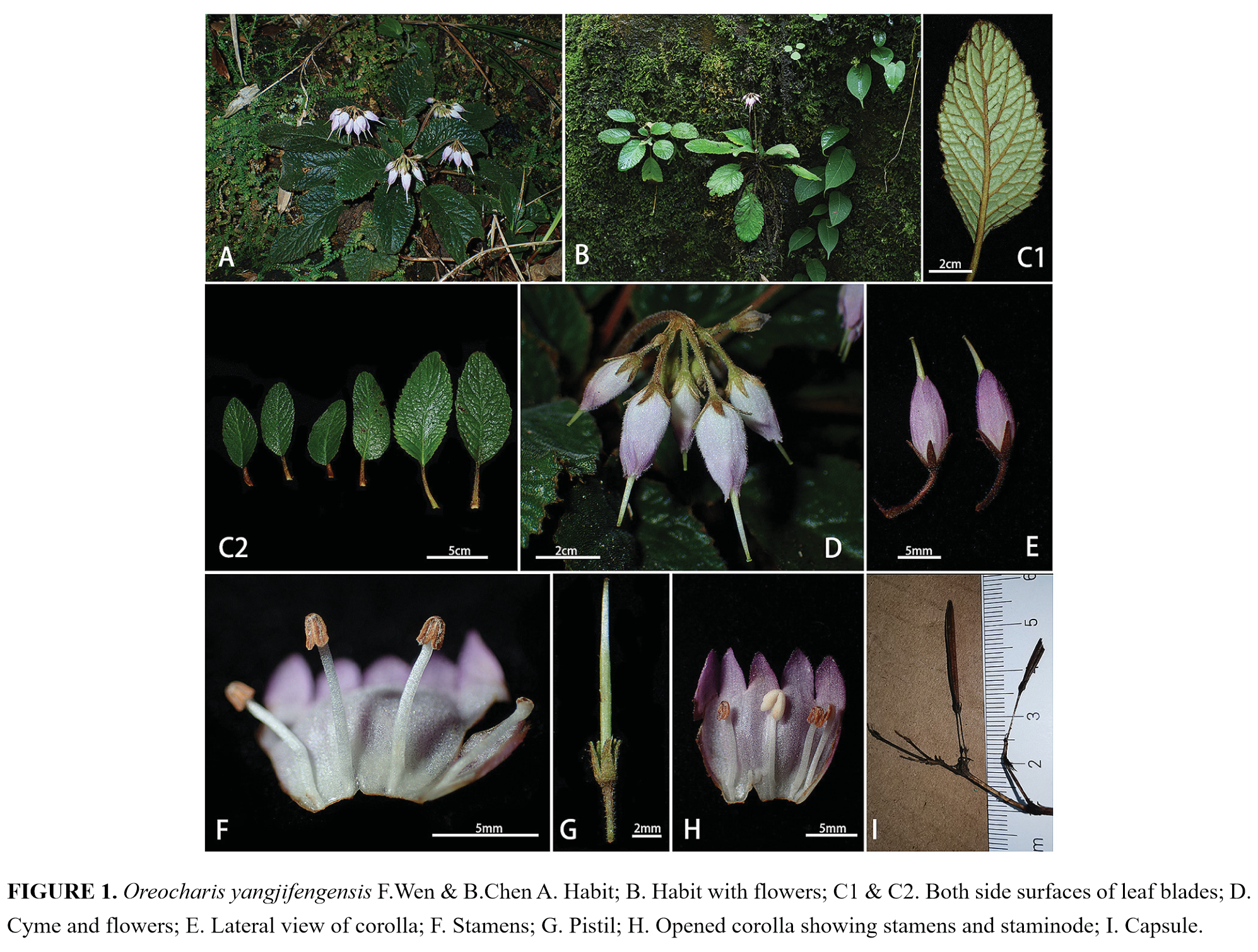No.21 Lan-Ying Su, Bo Pan, Xin Hong, Zhi-Guo Zhao, Long-Fei Fu, Fang Wen, Stephen Maciejewski
Petrocodon
jiangxiensis, a new species of Gesneriaceae
from the Karst Area of Jiangxi,
AnnBot vol. 56 (1-3)
Abstract
Based on morphological, cytological
and molecular evidence, a new species of Gesneriaceae, Petrocodon jiangxiensis F.Wen, L.F.Fu & L.Y.Su, is described and illustrated here. This species was
discovered from
Original link: http:// www.sekj.org/AnnBot.html
http://www.sekj.org/PDF/anb56-free/anb56-277-284-free.html
Notes: Only ABSTRACT and the first page of article are available at present.
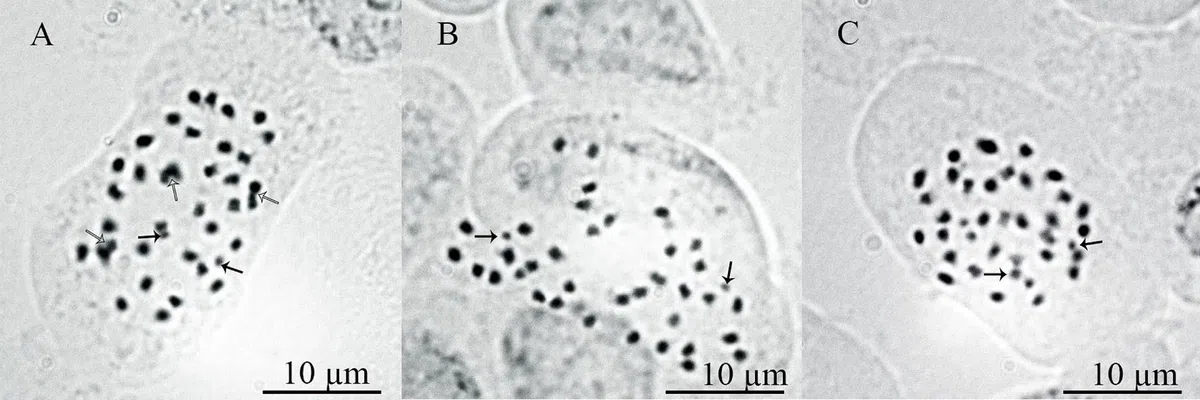
Fig. 1. Somatic chromosomes at metaphase of Petrocodon jiangxiensis (2n = 36). — A, B and C are from different cells.
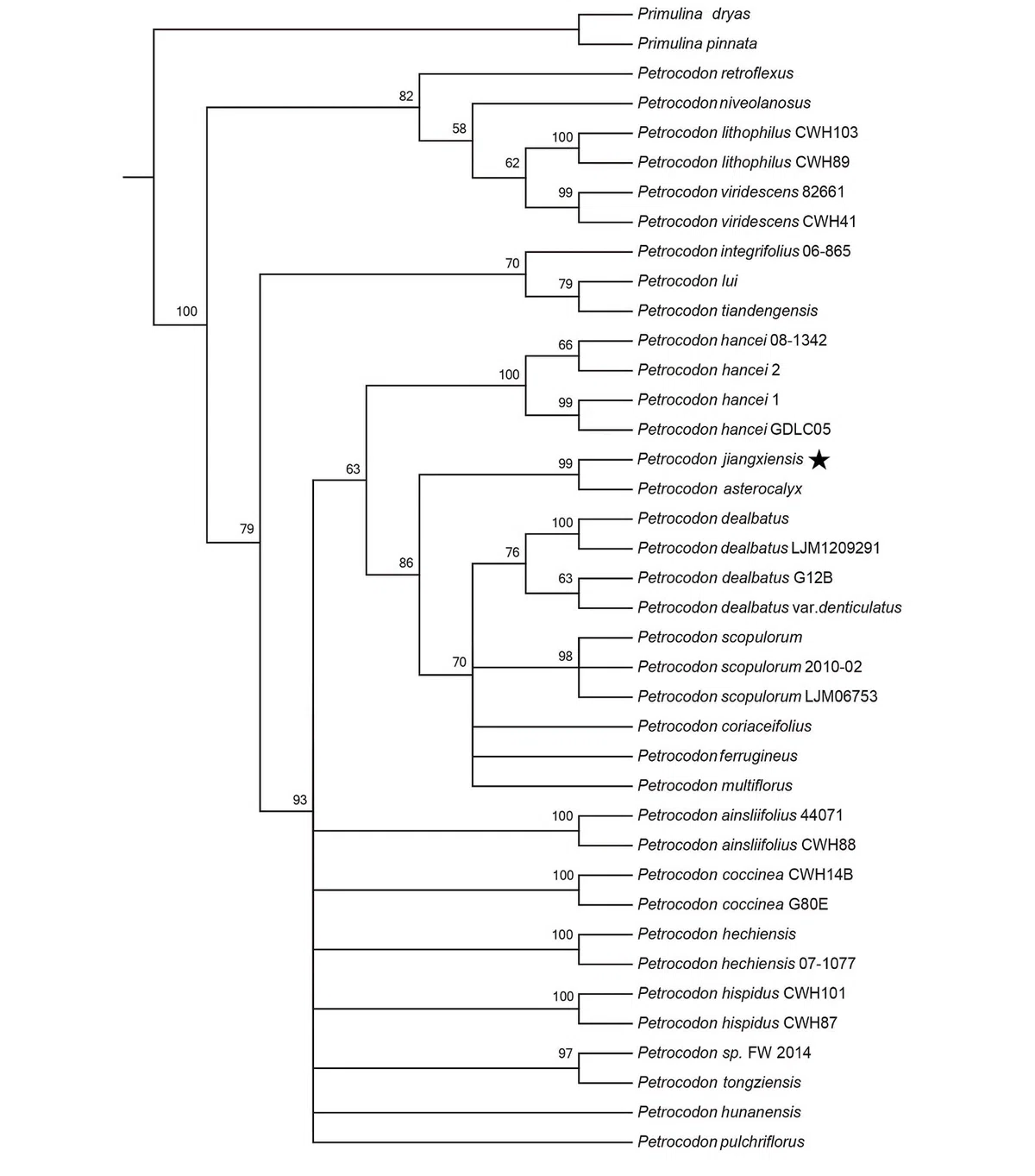
Fig. 2. Strict consensus tree resulted from a Maximum-parsimony (MP) analysis based on combined trnL-F and ITS sequences of 26 species. Bootstrap values > 50% by MP analysis are shown around the corresponding nodes. The star indicates the new species.

Fig. 3. Petrocodon jiangxiensis. — A and B: Habit of flowering plant in native habitat. — C: Fruits. — D: Bracts. — E: Adaxial leaf surface. — F: Abaxial leaf surface. — G: Inflorescence. — H: Stamens. — I: Calyx and pistil. — J: Opened corolla for showing stamens and staminode. — K: Flower in lateral view. — L: Flower in front view.



